Oct 29, 2024
Because November is Senior Pet Month, it's time to put an age-old question to bed (a soft, cushiony, orthopedic one, of course). Can senior dogs and cats become too old for anesthesia?
Anesthetic Risk in Humans
Let’s start with anesthetic risk in general. Back in the 1970s, the chance of a person dying under anesthesia was as high as 1 in 10,000. With remarkable advancements in specialized equipment, medications, and knowledge of how the body works, anesthetic mortality rates have declined to as low as 1 in 100,000 (0.001%).1 This number is only a rough estimate. Because of the enormous variety of procedures performed today, and because anesthesia mortality is so rare, it is difficult for researchers to accurately study and quantify it.
Anesthetic Risk in Animals
What about animals? The numbers are relatively higher, but the risk is still very low. In dogs, one of the most recent, and lowest, published canine anesthetic mortality rates is 0.05%. That number is slightly higher in cats, with reported rates from 0.11% in the United States to 0.63% worldwide.2,3 Researchers have some identified risk factors that may increase these rates2:
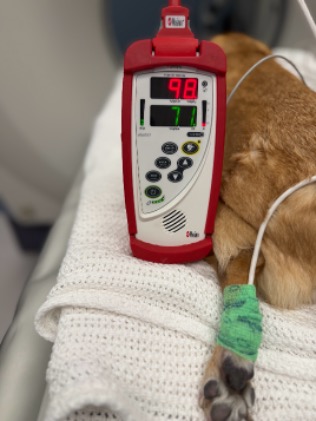
Use of a pulse oximeter to measure oxygen levels has been shown to reduce the risk of anesthetic mortality.1,4
Age and Anesthetic Risk
An older study found that dogs greater than 12 years old have seven times the risk of anesthetic death compared to dogs 0.5-12 years old.4 Cats greater than 12 years old have two times the risk of anesthetic death compared to cats aged 0.5-5 years.5 Why?
Age and Disease
With age, organs like the kidneys, liver, and heart may not function as optimally as they once did. Under anesthesia, these are the exact organs required to successfully undergo the process. The American Society of Anesthesiologists uses a system to classify anesthetic risk based on degree of organ dysfunction and disease:
| Physical Status | Description | Examples |
| I | Healthy patient undergoing an elective procedure | Spay or neuter |
| II | Patient with mild systemic disease | Obesity, heart murmur, hypertension |
| III | Patient with severe systemic disease | Advanced kidney disease, uncontrolled diabetes, brachycephalic airway syndrome |
| IV | Patient with severe systemic disease that is a constant threat to life | Heart failure, severe lung disease, septic shock, severe bleeding |
| V | Very sick patient not expected to survive without the operation | Severe trauma, advanced septic shock, uncontrolled hemorrhage |
It is not surprising that the higher the ASA status (and more advanced the disease), the higher the anesthetic risk. Note that age is not a consideration anywhere in this table.
Scientific data suggest that age should be a factor in considering anesthetic risk. But that doesn’t tell the whole story, and it isn’t very helpful unless we think a little bit harder about what exactly is happening in older pets and how we can successfully treat them:
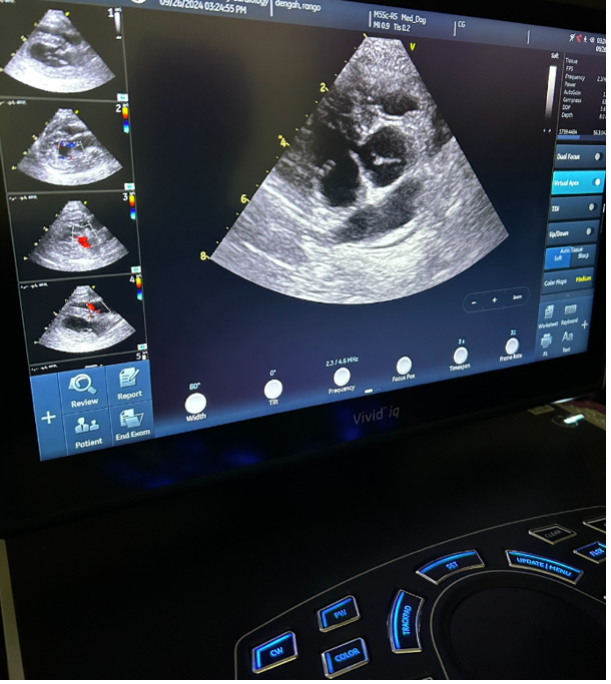
An echocardiogram allows the cardiologist to measure chambers of the heart and quantify its function.
If the above testing indicates disease, this means a pet has a higher ASA status. Does this mean the pet cannot undergo general anesthesia? Nope.
Just like in human medicine, there are board-certified anesthesiologists who are trained to anesthetize pets with complicated coexisting diseases. After veterinary school and a rotating internship program, veterinary anesthesiologists undergo a rigorous three-year residency program and must pass a certifying examination to become board-certified.
As a result of their advanced training, veterinary anesthesiologists:
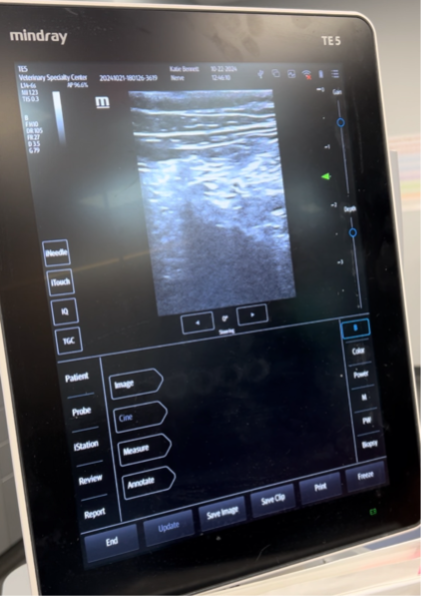
An ultrasound allows the anesthesiologist to visualize nerves and precisely deliver numbing agents, allowing the patient to be comfortable using substantially less anesthetic drug.
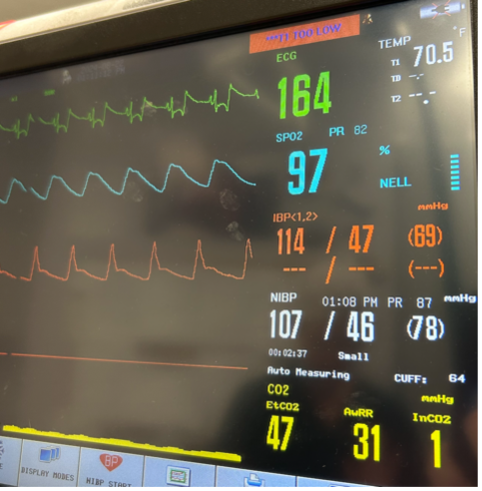
Invasive blood pressure monitoring measures a pet’s blood pressure as it changes with each heartbeat.
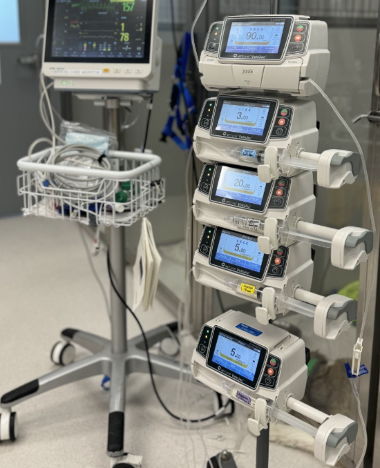
A specialty hospital like AESC is equipped to deliver several life-saving medications at once.
AESC employs a full-time veterinary anesthesiologist. In addition to having more complex medications and specialized monitoring equipment, AESC also has a multitude of specialists who are experts in their field. The anesthesiologist collaborates and consults with the other specialists for any pet undergoing anesthesia. For higher-risk pets, including – yes, older ones – AESC has the knowledge and tools to ensure they are as safe as possible.
References